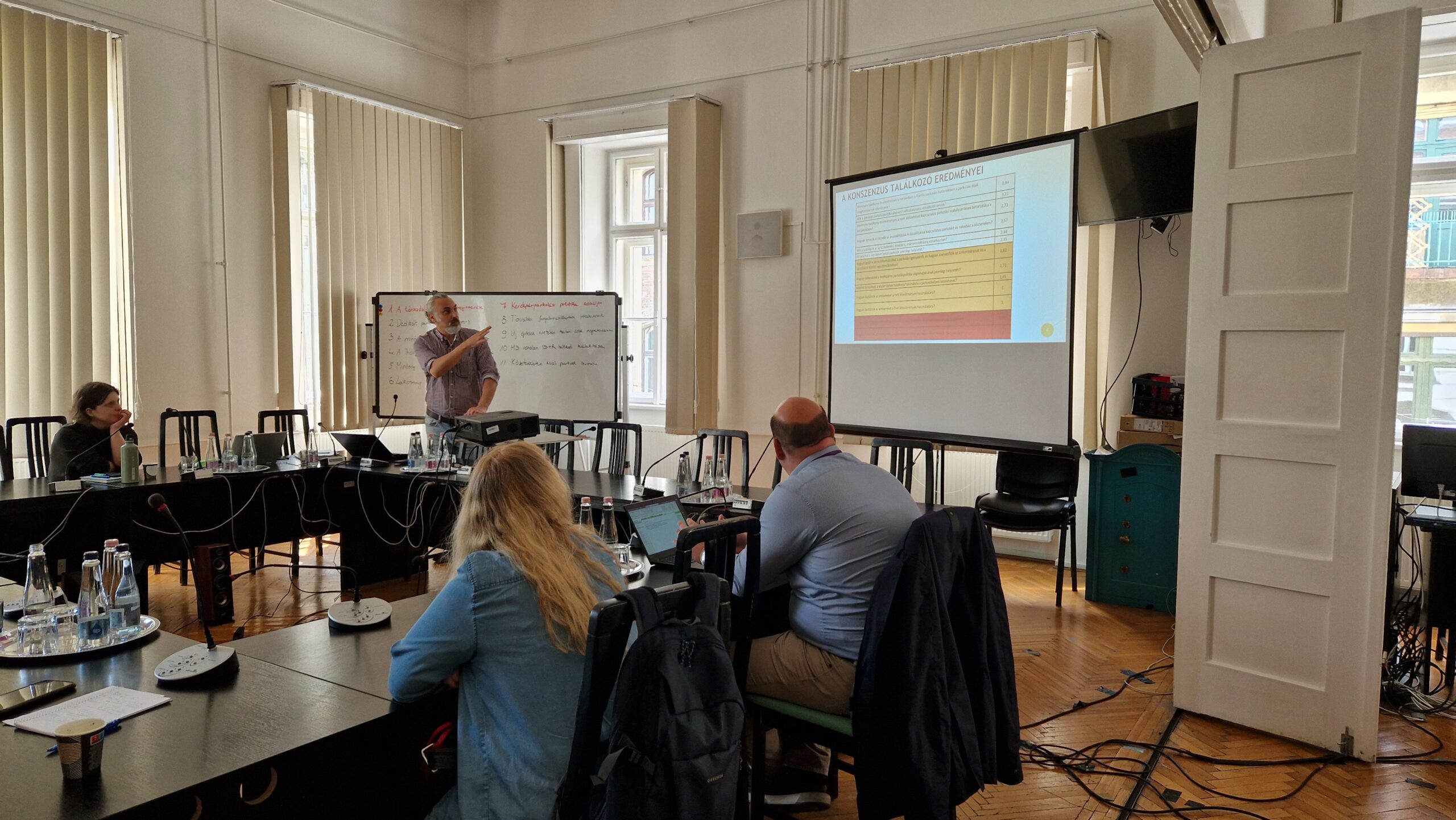Ferencváros uses ParkPAD to bring stakeholders together for sustainable parking solutions
The 9th district of Budapest, Ferencváros, has successfully completed the ParkPAD audit process as part of the Interreg Central Europe project NXTLVL Parking. The district took this opportunity to initiate a comprehensive dialogue with stakeholders and reflect on its current parking practices and strategies.
The ParkPAD methodology helped Ferencváros assess the maturity of its parking management system through a structured, participatory process. The local ParkPAD workshop brought together key stakeholders, including representatives from the municipality, the Budapest Transport Centre (BKK), the Public Space Management Company of Ferencváros (FEV IX.), civil society organizations, and private sector actors. Their collaboration ensured a wide range of perspectives were heard.
During the workshop, the participants evaluated the local parking management, assessing 13 questions in the 6 modules of ParkPAD evaluation survey, covering regulatory, planning, infrastructural, and communication elements. As a result, Ferencváros received a detailed profile of its current performance and a roadmap for improving parking policy in the years ahead.
The ParkPAD process also revealed several challenges. One of the key difficulties lies in balancing the district’s dense urban structure and limited public space with the increasing demand for car parking. In addition, the need for stronger integration between parking policy and sustainable mobility goals was emphasized. Stakeholders also highlighted the fragmentation of responsibilities among different municipal and metropolitan-level actors, which can hinder coordinated planning and implementation.
Key takeaways from the ParkPAD meetings to guide parking management development in Ferencváros:
- The integration of parking policy into the district’s Sustainable Urban Mobility Plan (SUMP) should be strengthened.
- A more dynamic, data-driven approach to parking regulation is needed.
- Public communication around parking and mobility measures should be improved to increase acceptance and awareness.
- Greater cooperation is required between the district and city-level institutions such as BKK and the Municipality of Budapest.
- On-street parking spaces could be gradually reallocated to support alternative uses (e.g. green areas, bicycle parking, delivery zones).
- Innovative solutions, such as digital parking management tools and shared mobility services, should be explored and piloted.
- Local businesses and residents should be continuously involved in shaping future parking strategies.
The audit process confirmed that while Ferencváros already demonstrates strengths in areas such as parking regulation and stakeholder cooperation, there is room to improve in terms of integrating parking into broader mobility planning and adopting innovative, demand-based approaches. The municipality has shown strong commitment to implementing the proposed recommendations.
The main outcomes of the action plan drawn up based on the ParkPAD audit meetings, two of which (highlighted) will be tested in the pilot interventions:
- Resolving parking problems in the non-paid part of the József Attila housing estate
- Further traffic calming measures in Ferencváros
- Technical implementation of long-term parking goals for new developments
- Dedicated parking spaces (for home-delivery and tradespeople)
- Generating qualitative parking data
- Inclusion of off-street parking in on-street parking
- Development of a B&R network on the M3 metro line
Within the framework of the project, a comprehensive parking concept will be developed, incorporating the results of various surveys conducted throughout the project. These include an assessment of the current parking situation in Ferencváros—such as the number of available parking spaces, the occupancy data and the rotation rate of parking spaces—as well as findings from an online questionnaire that explored the reasons for parking, users’ motivations, and their social background.
